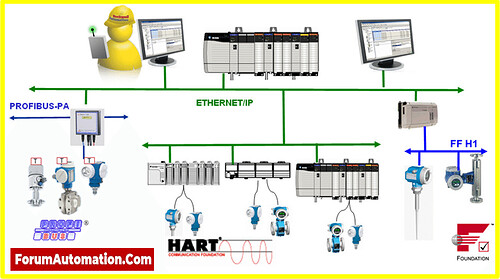In the world of industrial automation, Allen-Bradley, a brand owned by Rockwell Automation, is a major player. They provide a wide range of goods and services made to facilitate communication and management in manufacturing environments. The following list includes some of the different communication interfaces that Allen-Bradley products frequently support:
EtherNet/IP
For real-time device control and communication, the industrial Ethernet protocol known as EtherNet/IP is frequently utilised in Allen-Bradley products. For many Allen-Bradley controllers, I/O modules, and other networked devices, it serves as their main communication interface. High-speed and dependable connection provided by EtherNet/IP enables seamless integration with other systems and devices.
ControlNet
A fast, deterministic network called ControlNet is created for real-time control applications. It is frequently employed in applications for process automation and large-scale distributed control systems (DCS). ControlNet is an excellent choice for demanding control applications where exact timing and synchronization are essential due to its high bandwidth and low latencies.
For real-time, high volumes applications, ControlNet networks are open control networks that are designed to suit those needs. Real-time I/O, drive, and valve control, as well as controller to controller interlocking, are supported by ControlNet. Additionally, it offers control networking for discrete and process applications, as well as high availability ones.
DeviceNet
Industrial equipment including sensors, actuators, and motor drives can communicate with one another via DeviceNet, a low-cost, slow-speed network. It offers plug-and-play connectivity and is frequently used for straightforward device-level monitoring and control. DeviceNet supports a variety of devices and makes configuration and integration simple.
RS-232/RS-485
These are the most typical serial communication interfaces for point-to-point connections between Allen-Bradley hardware and accessories like computers, HMI panels, and printers. RS-232 is a single-ended interface, whereas RS-485 is a differential interface that supports more devices on a single bus and longer communication distances. In Allen-Bradley devices, RS-232 and RS-485 are widely supported, providing flexibility and interoperability with a variety of external devices.
Data Highway Plus (DH+) network
For applications on the factory floor, the Data Highway Plus (DH+) network is a local area network created to facilitate remote programming and communications between computers and controllers. Local area network created for use in manufacturing floors and easily attainable. Enables straightforward communication between PLCs, SLCs, and PCs
Profibus
A common fieldbus protocol in industrial automation is profibus. For integration with other Allen-Bradley devices and systems, some of these devices allow Profibus communication. Profibus is appropriate for a variety of applications in the process and discrete sectors thanks to its high-speed connectivity, reliability, and flexibility.
Modbus
For linking industrial devices, one common serial communication protocol is called Modbus. The ability to connect with Modbus-compatible devices, such as PLCs, HMIs, and sensors, is provided by some Allen-Bradley products. Modbus is widely used and provides simplicity, interoperability, and simple device integration.
Depending on the particular product line and model, Allen-Bradley devices may also support additional communication protocols and interfaces, such as CANbus, BACnet, OPC, and others, in addition to these. With the help of these interfaces, a wide range of frequently used systems and devices for industrial automation environments can be seamlessly integrated.
It’s essential to keep in mind that the portfolio of products offered by Allen-Bradley may include several product series or devices with different availability of particular communication interfaces.


